The best windbreakers: beat the weather and stay warm outdoors
Our pick of the best windproof jackets for keeping gales, gusts and breezes at bay, and preventing windchill from ruining your adventure
Some of the best outdoor adventures take place in the worst weather and most confronting and challenging conditions. Sure, hikes and backcountry escapades on bluebird days are nice, but often the missions that pit you against the elements are the most memorable. Having the right gear for these conditions is absolutely imperative – and that includes carrying the best windbreaker you can get your hands on.
Windchill can make conditions considerably colder than the forecast temperature – especially if you’re in the mountains or on an exposed hillside. If you’re not prepared, windchill can make an outdoor experience utterly miserable, and in some cases it can even lead to hypothermia, frostbite and other potentially life-threatening eventualities.
We've put heaps of windbreakers through their paces in a range of conditions, from mild woodland walks to real storms, to test their breathability, windproofing, warmth and practical features like secure hoods and adjustable cuffs. This extensive testing has allowed us to put together this definitive list of the best jackets you can buy today.
The Arc’teryx Gamma Lightweight Hoody is our top pick for the best windbreaker thanks to its exceptionally light construction and excellent protection around your head and face. We particularly like the fact that you can adjust the hood one-handed when the weather takes a turn for the worse. If you're looking for a windproof jacket for running, the Salomon Sense Flow is well worth a look thanks to its excellent ventilation, which stops you overheating while still providing good protection from windchill.
The quick list
This is our quick list, a brief overview of the best windbreakers available. To delve deeper into the specifics of each jacket, see our more detailed reviews further down the page in this guide.
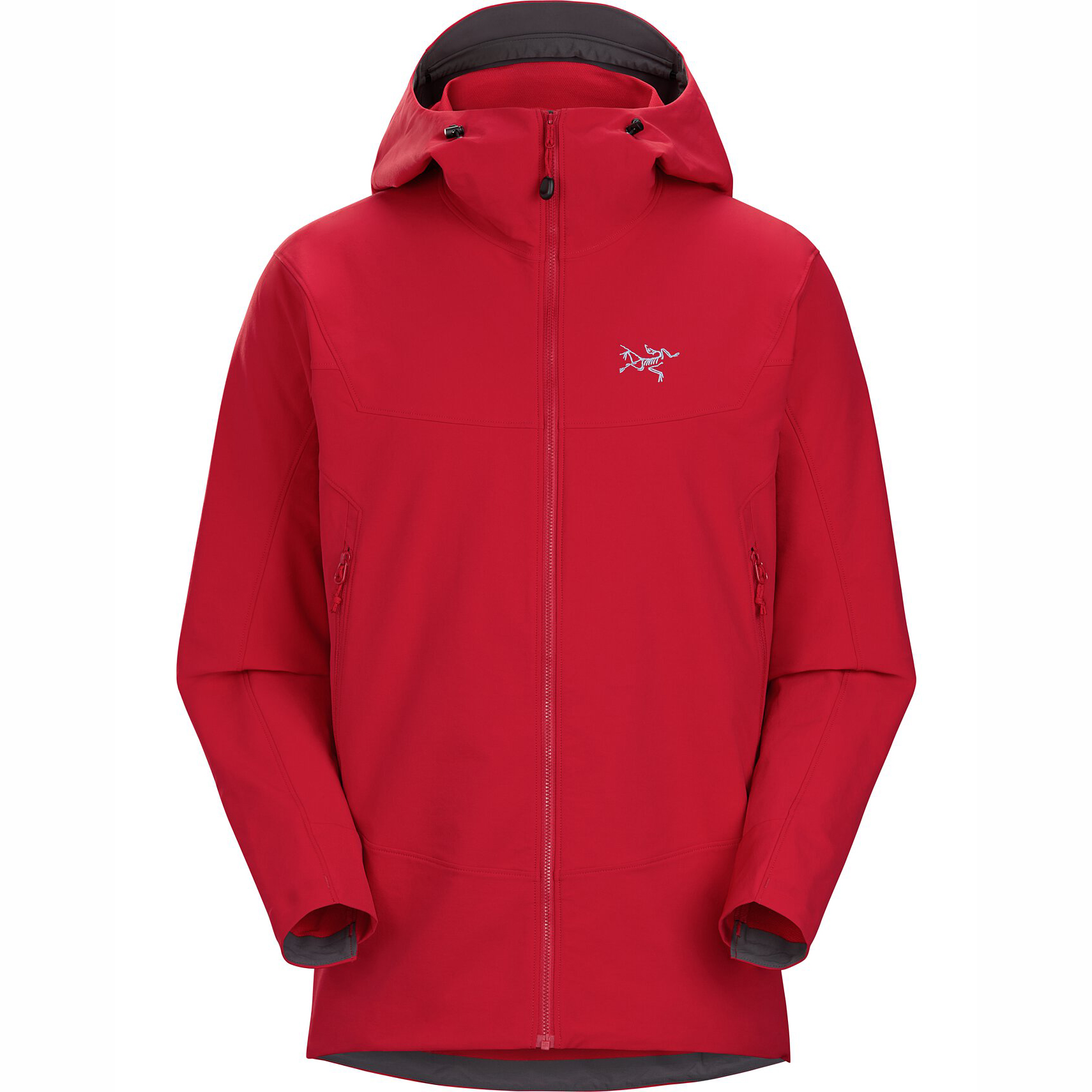
A lightweight and breezeproof jacket for wearing while hiking, scrambling and climbing. We particularly appreciated its easily adjustable hood, which can be secured single-handed, and its well designed vents to prevent you getting sweaty.
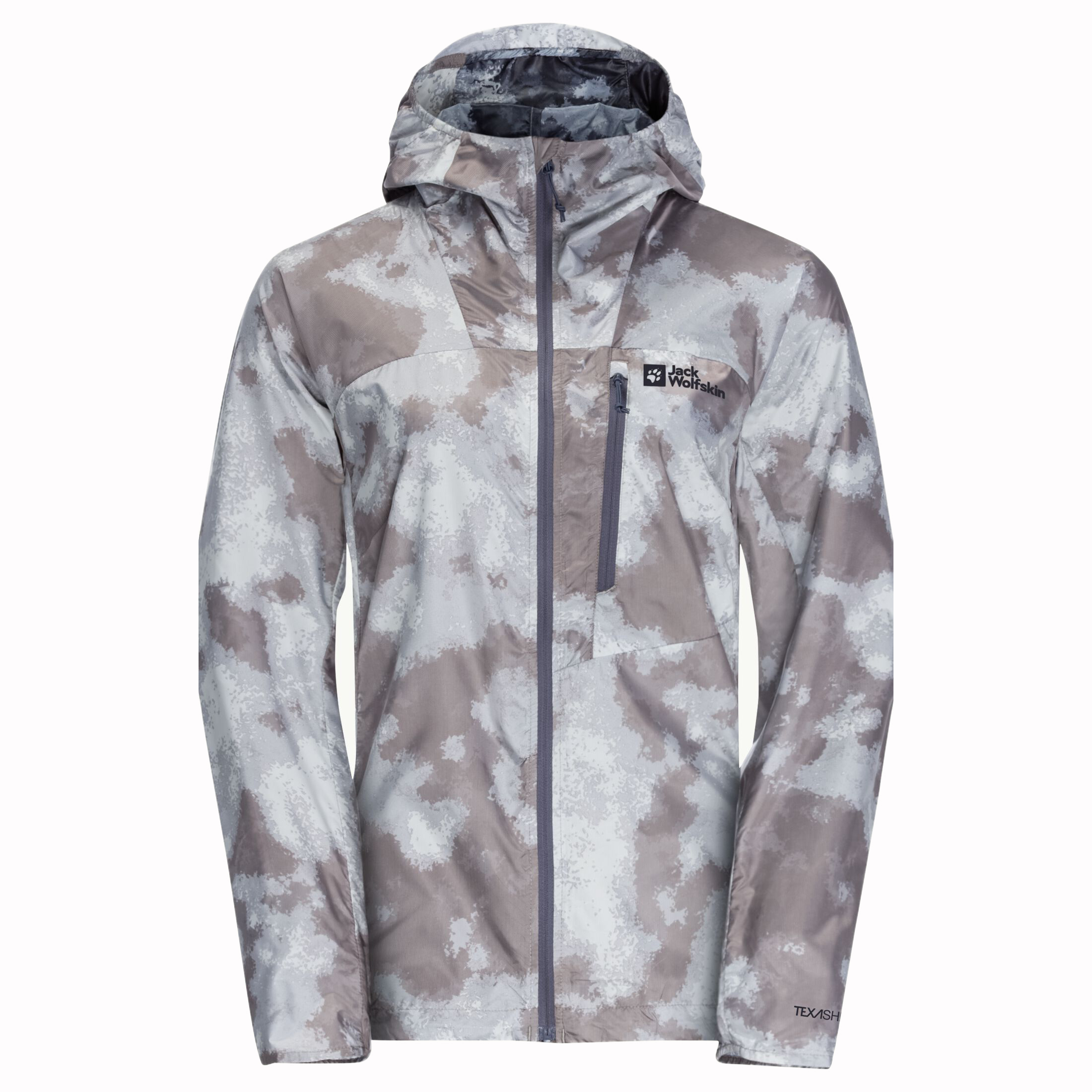
This ultralight windbreaker is made from entirely recycled materials and its clever cuffs and hood will keep out the breeze on the windiest hilltop. Our tester loved its tiny packed size too; it compresses down to the size of an apple.
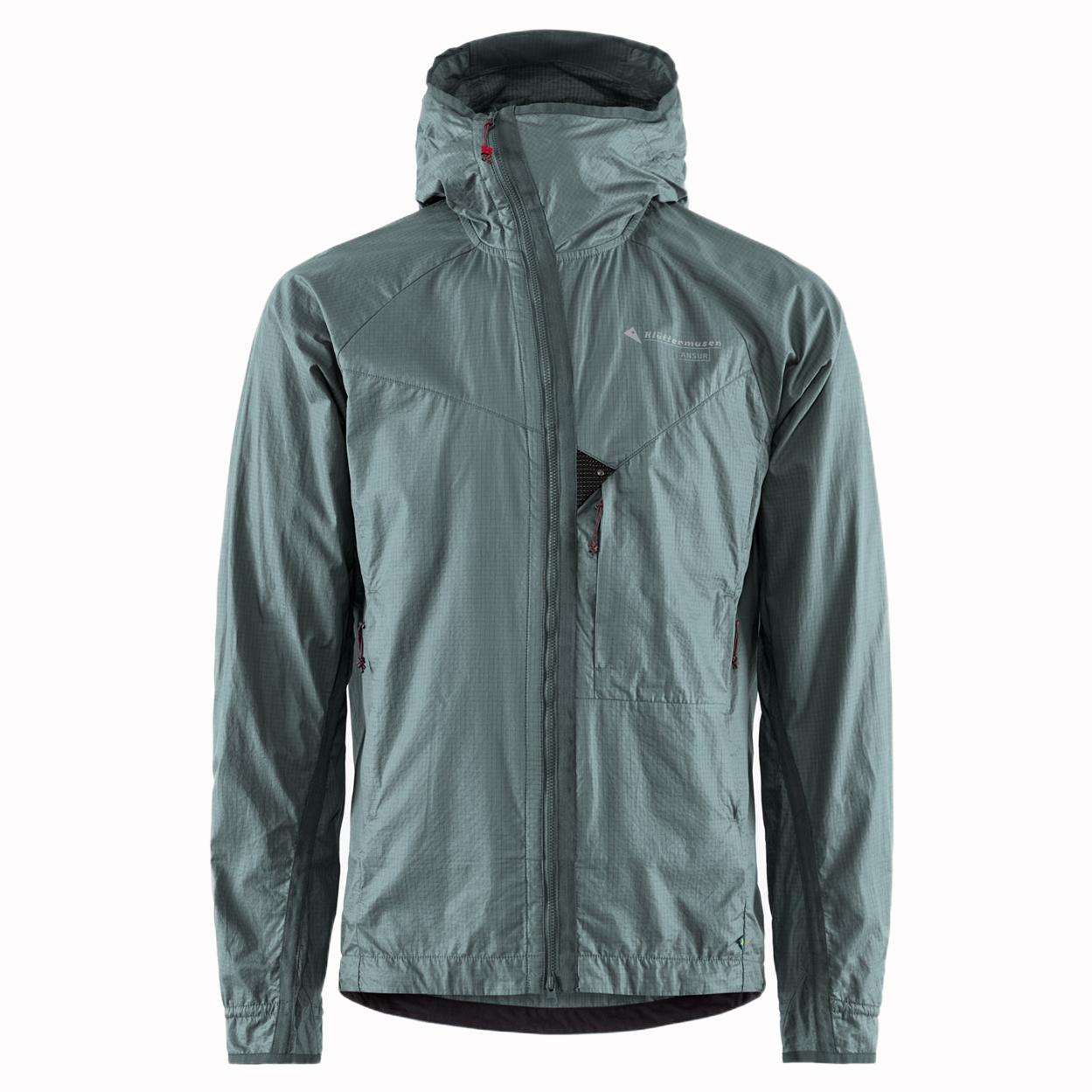
Made from a treated cotton that manages to stay windproof, breathable and water-repellent. We were impressed that there was no significant buildup of moisture inside, even when we were working hard, and that rain beaded nicely on the outer.
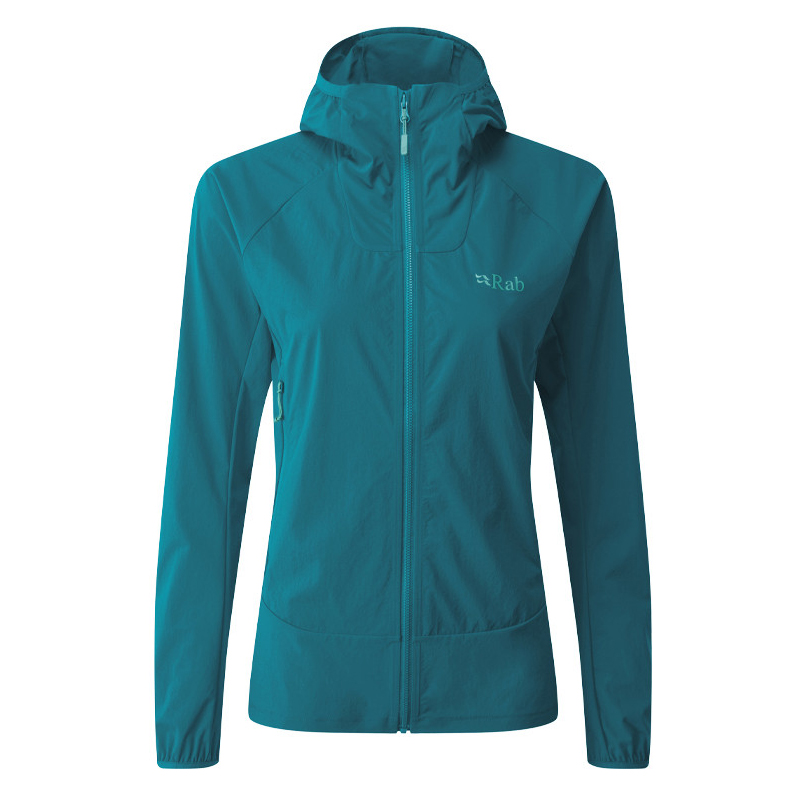
Designed for rock climbers, the hood of the Rab Borealis fits comfortably a helmet, and the pockets are easily accessible when you're wearing a harness. Our tester appreciated the slim fit, which means there's no loose fabric flapping around.
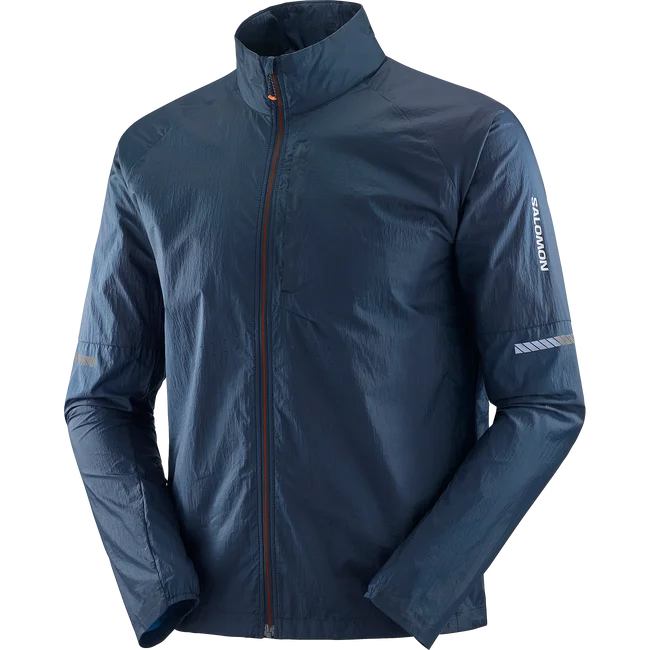
Easy to stuff into your pack when running, this just-in-case jacket is brilliant at reducing windchill while featuring vents that allow your skin to breathe without letting the cold in. We like the adjustable waist cord, which gives a custom fit and keeps things aerodynamic.
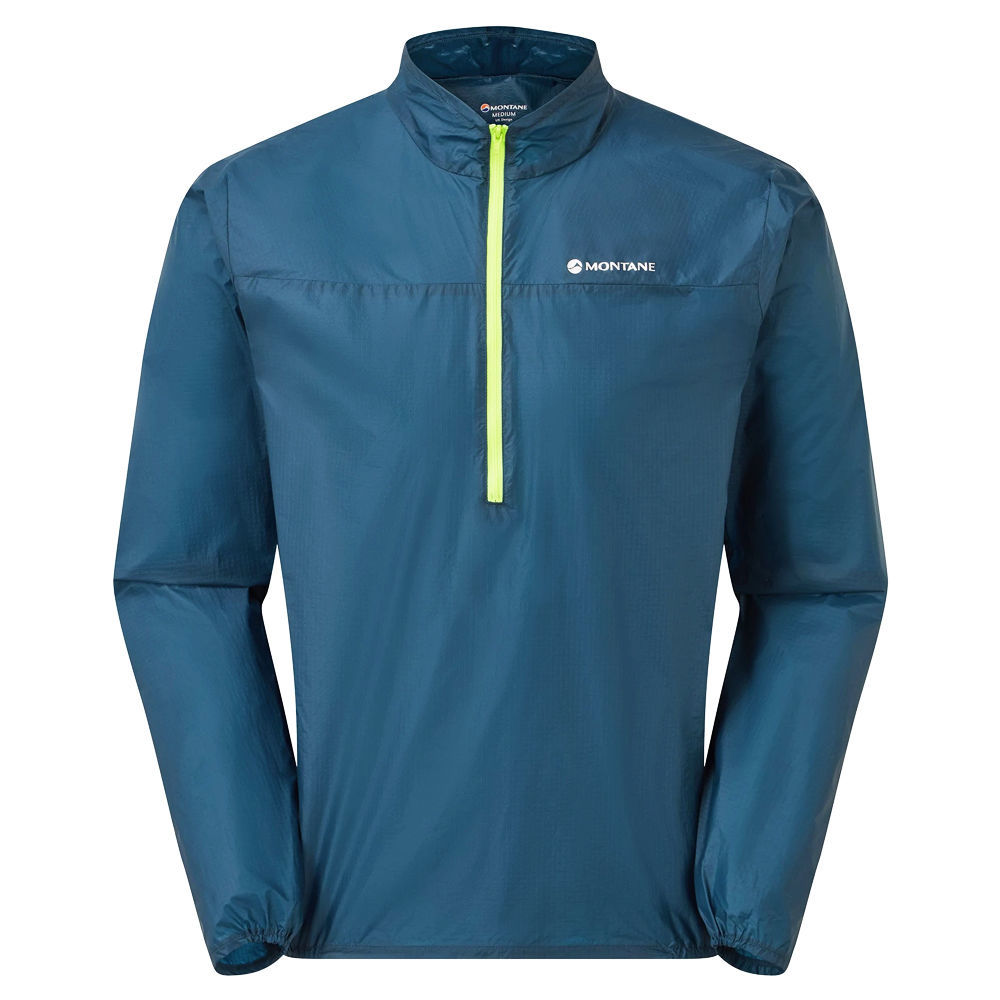
This 'wind shirt' weighs just 60g / 2oz, will keep out cold breezes and light rain without making you overheat, and it's easy to take on or off when out on the trails. There are no pockets or hood, but we appreciated its light weight and convenience on the move.
Load the next product ↴
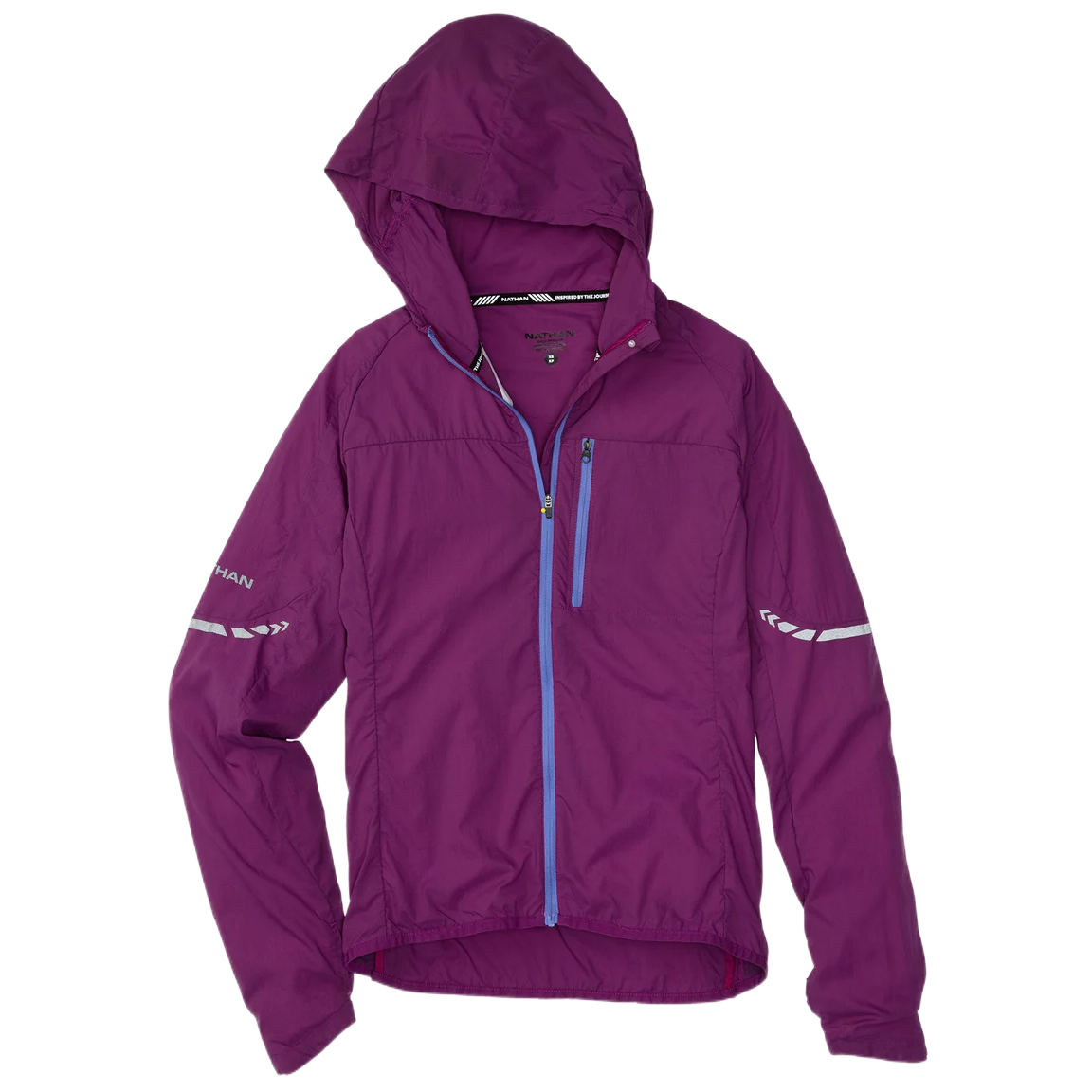
The Nathan Stealth Jacket offers a swish-free design that's light and breathable while still offering protection from the elements when you need it. We found it super fast to dry after a run, and there's no excess fabric getting in the way.
The best windbreakers we recommend in 2025
You can trust Advnture
The best windbreaker overall

Specifications
Reasons to buy
Reasons to avoid
Exceptionally light (although not on the wallet), the original Arc’teryx Gamma Hoody is made with Fortius 1.0, a windproof softshell material comprised of hardwearing nylon and dynamic elastane, with the latter providing a high degree of stretch. The jacket isn’t waterproof, but it has been treated with a durable water repellent, FC0-DWR, and does repel light rain and moisture.
The Gamma has an adjustable hem and features a full-length zipper that extends to protect your neck and lower face, and ends with a chin-protecting zip garage. The ‘stormhood’ has a good peak, completing the decent all-round head cover. This jacket has two hand pockets, both of which zip shut.
It’s a good wind-defying outer layer during the warmer months, but once temperatures start to drop, this wafer-thin top doesn’t supply much thermal protection. The bottom hem can be drawn in to keep breezes out, and a couple of tiny toggles maintain the tightness. The hood has a single adjustment point, which is very easy to use with one hand, and we found the peak on the front effective at keeping the elements out.
Read our full Arc'teryx Gamma Lightweight Hoody review
The best eco-friendly windbreaker
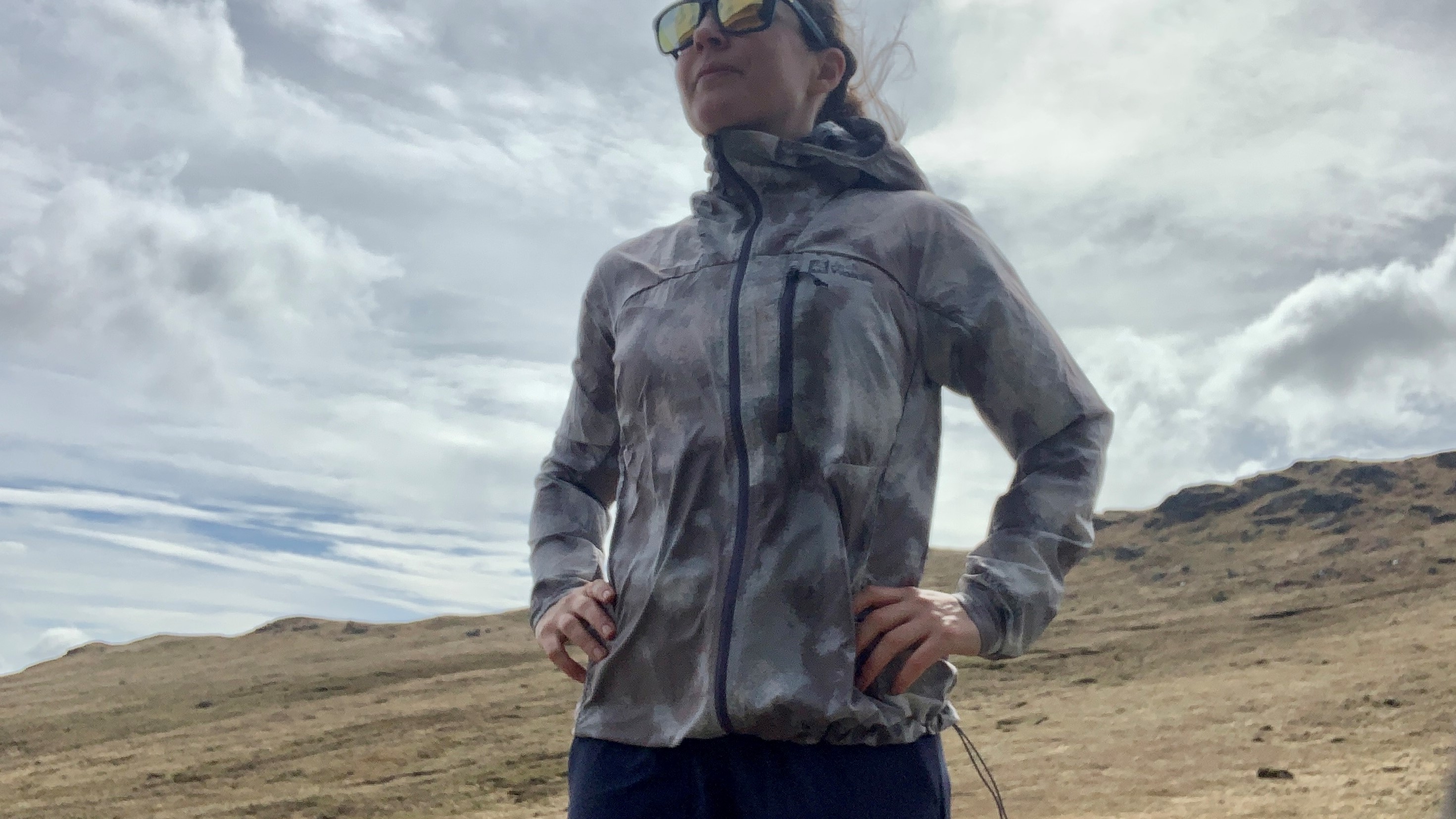
Specifications
Reasons to buy
Reasons to avoid
This windbreaker manages to be ultralight without feeling fragile, while still capable of keeping out a howling gale on a high ridge. In addition to the Texashield Ecoshere Pro fabric, which is water repellent and breathable as well as windproof, an adjustable hem and elasticated cuffs help seal out the breeze and a stay-put hood challenges the wind when you want to keep your head and ears cosy.
There’s a chest pocket big enough to hold most phones and the whole thing packs down to about the size of a small apple. It’s a little on the pricey side, but it’s a good-looking jacket that you’ll be as happy wearing around town as up a hill. The whole thing is constructed using recycled materials, too.
Our tester reported that she could barely feel this jacket whilst wearing it, because it was so comfortable, and she experienced no skin chafing or rubbing. Impressively, even while being trialled on windswept hilltops in Scotland, the hood never blew down, even though it’s not adjustable, and the elasticated cuffs kept our reviewer’s wrists warm too.
Read our full Jack Wolfskin Prelight Windbreaker review
The best lightweight windbreaker
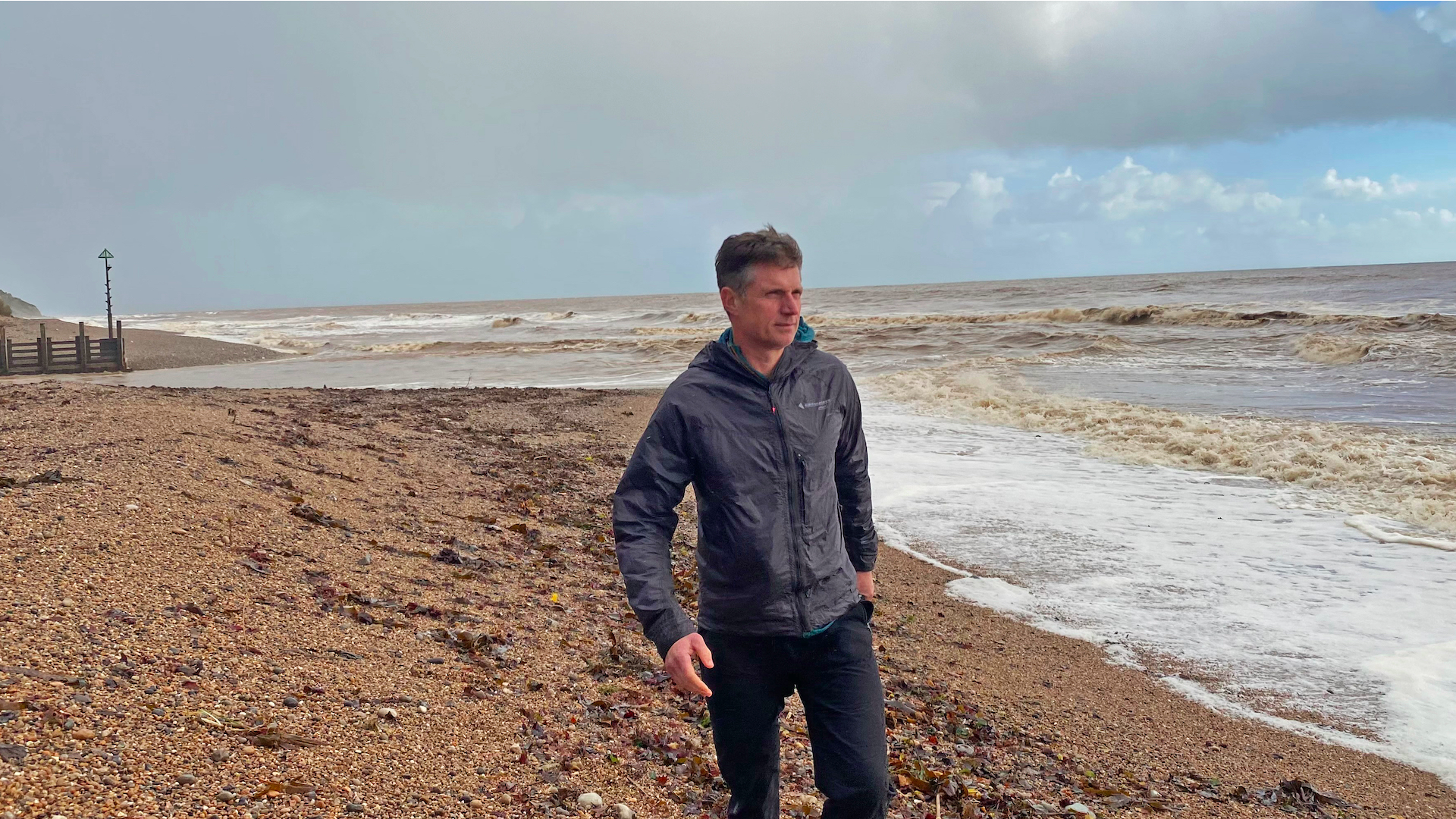
Specifications
Reasons to buy
Reasons to avoid
Made entirely from eco-friendly organic Katla cotton, the stylish and extremely lightweight Ansur is designed to be both functional and minimalist. Typically we strongly advise against wearing cotton apparel in the outdoors; however Klättermusen claim the cotton used in the Ansur has been ‘subjected to pressure and heat to resemble geological compaction’, producing a fabric that’s ‘windproof, water repellent and highly breathable’.
We found it kept wind out brilliantly, and also felt nice and breathable, with no significant amount of moisture build up on the inside. During light showers, rain beaded up and rolled straight off the outer fabric. However, the sizing is tight; you’ll struggle to wear this jacket over anything beyond a base layer and a midweight fleece, which is fine in spring and fall but a potential issue in winter, because the thermal protection is low.
You can choose between a hooded and a non-hooded version of the Ansur; on both the neck is very high and the back extends below the top of your bum.
Read our full Klättermusen Ansur hooded windproof jacket review
The best windbreaker for climbing
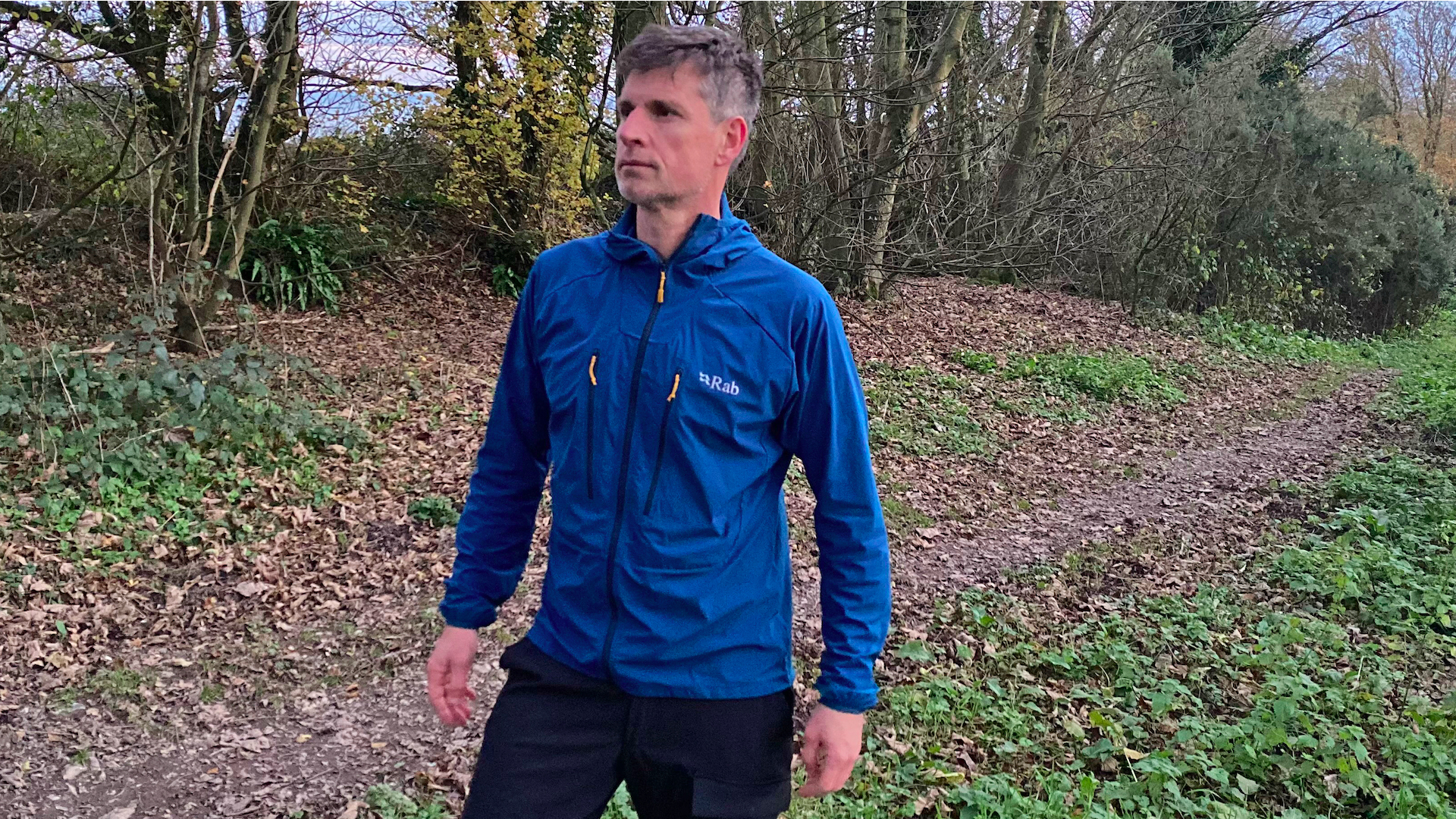
Specifications
Reasons to buy
Reasons to avoid
A good-looking, lightweight softshell jacket, the Borealis works well as an easy-to-carry, long-sleeved, wind-blocking layer for hikers, bikers, ramblers, amblers and scramblers, but it has primarily been designed for rock climbers, with pockets positioned to be accessible when you have a harness on, and the hood kept deliberately low profile so it fits comfortably under a helmet.
Made from Rab’s ‘Matrix’ material (a polyamide and elastane mix), the Borealis boasts a very trim fit – perfect for a breeze-blocking jacket, because you don’t want loads of loose material flapping around in the wind (just be aware that you won’t be able to fit much more than a base layer underneath it).
There are two mesh-lined Napoleon chest pockets on the men’s Borealis (they’re positioned to the side for the women’s version), which zip shut and can be accessed even when you’re wearing a harness. All the zips have pull cords to make them easy to operate with cold hands or with gloves on.
Read our full Rab Borealis Softshell Jacket review
The best windbreaker for running
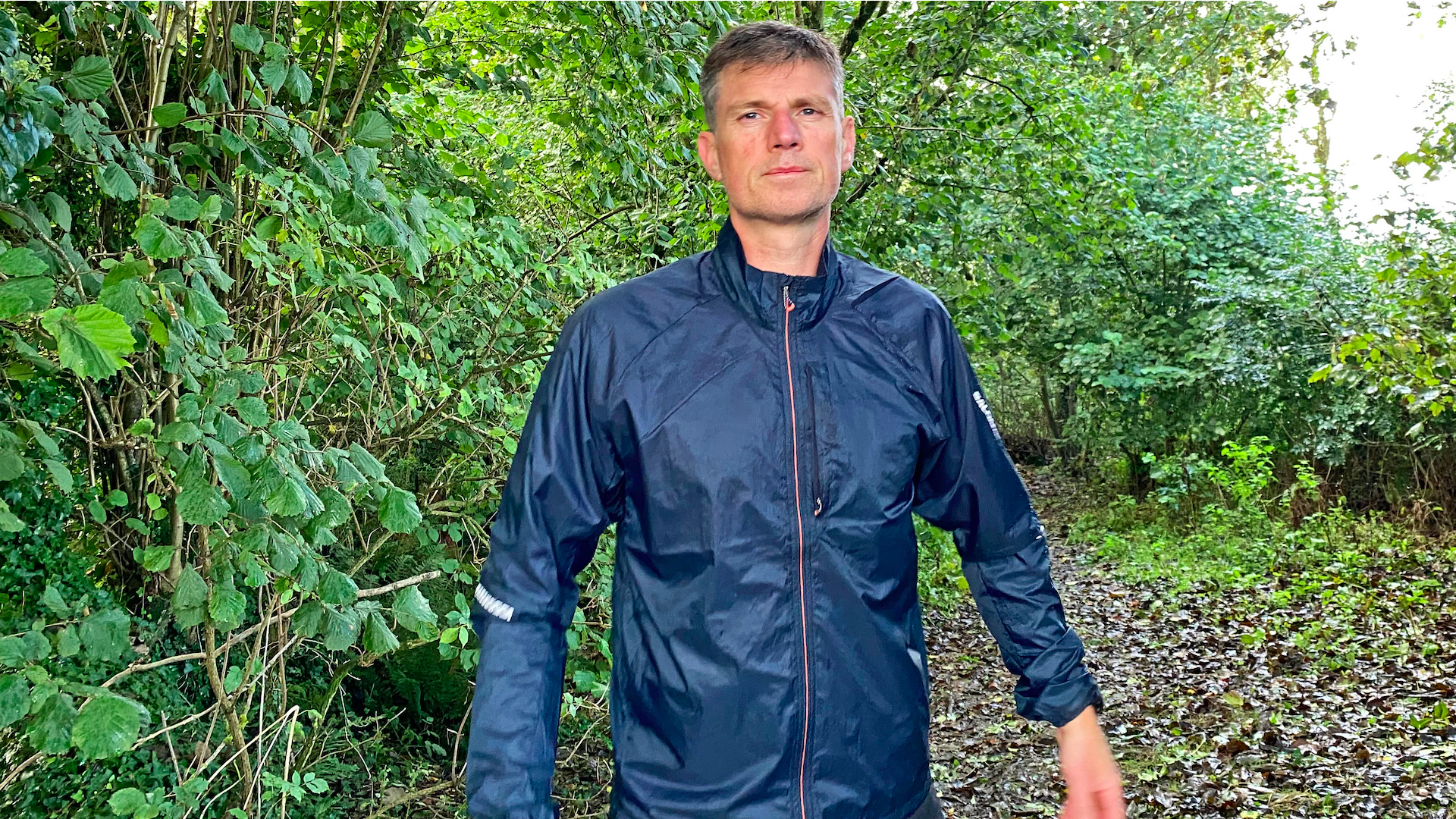
Specifications
Reasons to buy
Reasons to avoid
Featherlight and super easy to stuff into a hydration pack, this is a jacket designed to be carried as much as worn. When on, it has a trim fit (if in doubt, go for the larger size), with very little in the way of excess fabric left to flap around. The Flow features a thin layer of synthetic insulation on the inside, which does a reasonable job of keeping you warm, but reducing windchill is definitely the main focus.
Undoubtedly one of the best running jackets on the market, the Sense Flow doesn’t offer any waterproofing, and although there is some insulation across the top of the body and arms, its main role is to protect you from the wind. There’s a series of vents on the rear of the jacket that allow your back to breathe without letting cold air in.
Additional features include an adjustable waist cord and a zipped pocket on the chest for carrying some cash, keys or a gel sachet. There are reflective elements on the sleeves for safety when you’re sharing lanes and roads with traffic but, weirdly, no reflectors on the back of the jacket.
Read our full Salomon Sense Flow Jacket review
The best minimalist windbreaker
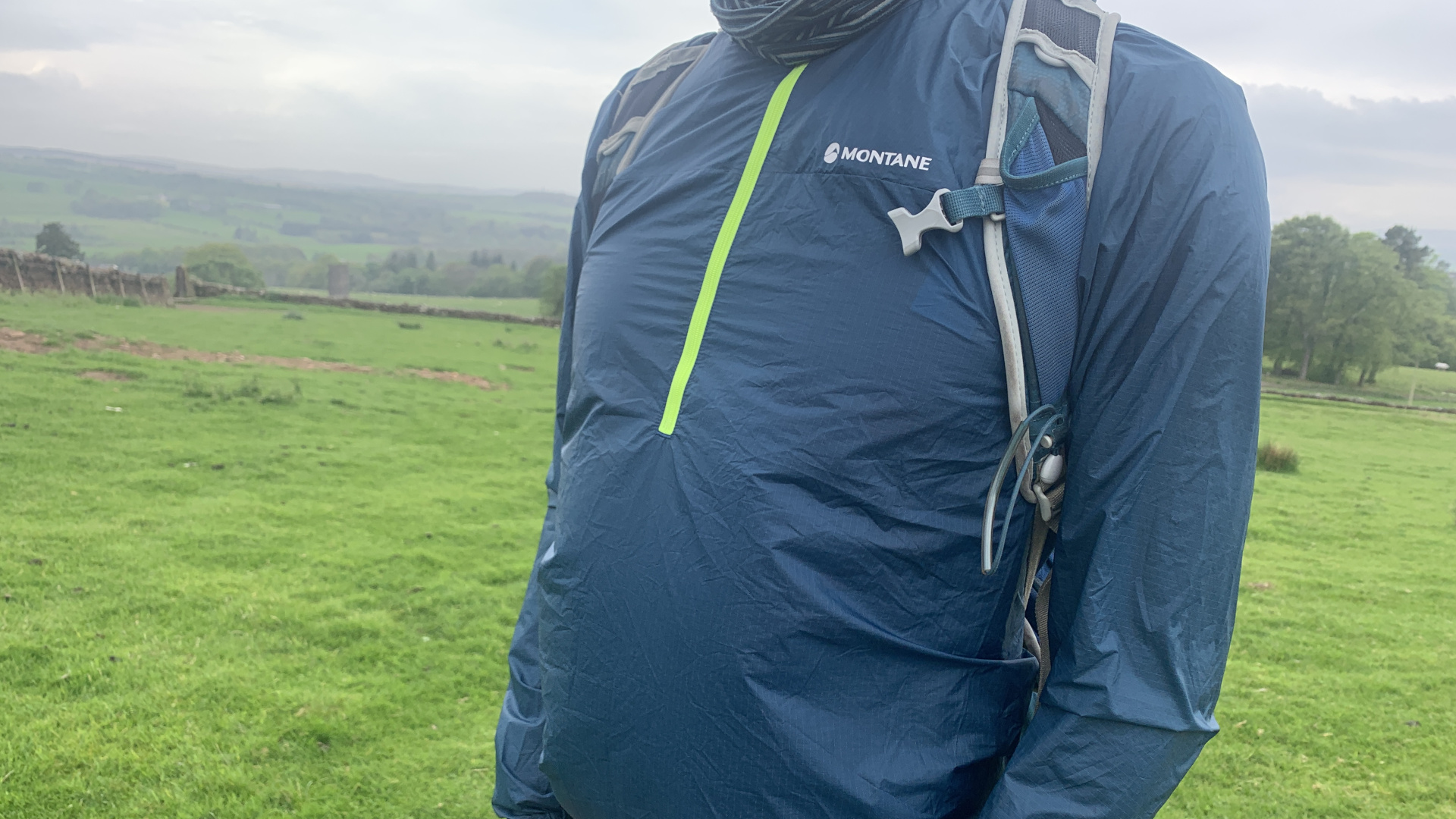
Specifications
Reasons to buy
Reasons to avoid
Montane calls the Lite-Speed Trail Pull-On a wind shirt rather than a jacket, and that’s a great term for it. Though it’s definitely an outer layer, it doesn’t have any of the features you’d typically expect from a coat, such as pockets or a hood, but the simplicity of the design is the key to it being so lightweight and packable.
Our tester reports that the slim-fit cut and elasticated cuffs and hem mean you experience no annoying flapping in the breeze, but it can still be worn over your best running top or even a long-sleeved base layer.
Because it’s not totally waterproof, it does provide more breathability. This isn’t an insulated jacket, it’s a wind shirt, but in keeping the wind off you, it does a great job of providing warmth on chill days. The Lite-Speed Trail Pull-On is well constructed, but the fabric is, by nature, fragile and won’t win out in a battle with a hawthorn bush.
If you’re seeking simple protection from windchill or blustery days, you’ll love the look and feel of this wind shirt. Basically, it does exactly what it says on the label, and does it well.
Read our full Montane Lite-Speed Trail Pull-On review
The best silent windbreaker
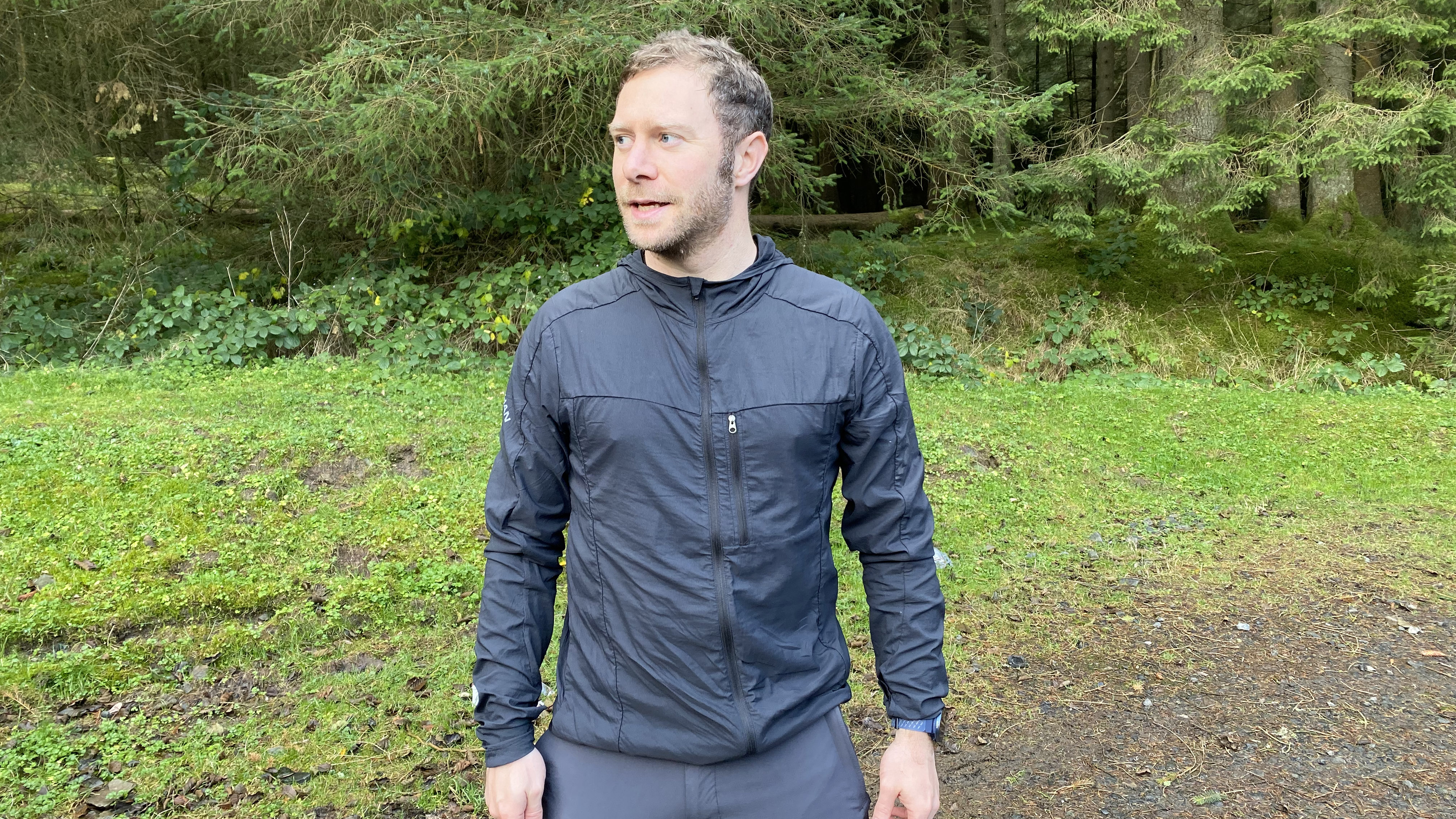
Specifications
Reasons to buy
Reasons to avoid
The well-named Stealth Jacket allows you to hit the trails and enjoy nature’s symphony rather than listening to the rhythmic swish of your running jacket. It’s also wonderfully lightweight, packs down small and is moderately priced. Made from moisture wicking and fast drying nylon, it’s a great, minimal soft shell windbreaker, perfect for chilly winter and shoulder season runs.
The Stealth perfectly tiptoes the middle ground between being light and breathable enough to run in comfortably, while giving you enough warmth and protection from the elements to be worth wearing in the first place. Our reviewer reports that it is gloriously comfortable on the trails thanks to its low weight, breathable fabric, ventilation features and fit, but it forms a decent barrier against the wind and cold. Being an ultralight soft shell, it’s not designed for taking on harsh and wet conditions, but there’s a DWR (durable water repellent) finish to give a degree of water resistance for the occasional drizzly spell or sudden shower. Our tester found that the Stealth was pleasingly quick drying.
Read our full Nathan Stealth Jacket review
The best windbreakers comparison table
Windbreaker | Price | Weight | Compatibility |
Arc’teryx Gamma Lightweight Hoody | $220 (US) / £170 (UK) | 300g / 10.6oz | Climbing, hiking, biking |
Jack Wolfskin Prelight Windbreaker | £115 (UK) | 120g / 4.2oz | Hiking, peak bagging and fastpacking |
Klättermusen Ansur Hooded Windproof Jacket | $299 (US) / £269 (UK) | 307g/10.8oz | Hiking, trekking, walking, climbing, backpacking |
Rab Borealis Softshell Jacket | $120 (US) / £95 (UK) | 300g / 10.5oz | Climbing, hiking, trekking, walking |
Salomon Sense Flow | $170 (US) / £155 (UK) | 125g / 4.4oz | Ideal for fall and spring, when windchill can make running unpleasant |
Montane Lite-Speed Trail Pull-On | $80 (US) / £80 (UK) | 60g / 2.11oz | Trail running, hiking |
Nathan Stealth Jacket | $90 (US) | 125g / 4.4oz | Hikes and trail runs in all but very wet conditions |
How we test the best windbreakers
Our reviewers test windbreakers during windy weather in a range of environments, from hills and peaks to coastal paths and woodlands. Features (including waterproofing, breathability, ventilation, materials, style, pockets, freedom of movement and overall comfort) are tested against claims made by the brand, and we assess factors such as value for money, durability, functionality and environmental impact.
Meet the testers

Writer, editor and enthusiast of anything involving boots, bikes, boats, beers and bruises, Pat has spent 20 years pursuing adventure stories. En route he’s canoed Canada’s Yukon River, climbed Mont Blanc and Kilimanjaro, skied and mountain biked through the Norwegian Alps, run an ultra across the roof of Mauritius, and set short-lived records for trail-running Australia’s highest peaks and New Zealand’s Great Walks. He’s authored walking guides to Devon and Dorset, and once wrote a whole book about Toilets for Lonely Planet. Follow Pat’s escapades here.

Julia Clarke is a staff writer for Adventure.com. She is an author, running enthusiast and yoga teacher who loves hitting the tarmac and trails in her native Sctoland. She recently returned to her hometown of Glasgow, after 20 years living in the USA, 11 of which were spent running in the rocky mountains of Vail, Colorado where she owned a boutique yoga studio and explored the west's famous peaks and rivers.

Alex is a freelance adventure writer and mountain leader with an insatiable passion for the mountains. A Cumbrian born and bred, his native English Lake District has a special place in his heart, though he is at least equally happy in North Wales, the Scottish Highlands or the European Alps. Through his hiking, mountaineering, climbing and trail running adventures, Alex aims to inspire others to get outdoors. He is currently President of the London Mountaineering Club, training to become a winter mountain leader, looking to finally finish bagging all the Wainwright fells of the Lake District and hoping to scale more Alpine 4000ers when circumstances allow. Find out more at www.alexfoxfield.com
How to choose the best windbreaker for you
As with any piece of technical outdoor apparel, the best windbreaker for you will depend on various factors, including where and when you intend to use it, and what kind of adventure activities you most commonly enjoy. Runners, for example, are typically just as interested in how heavy a windproof jacket is, as to how well it does its job. Here are some factors we think you should consider, but if you can’t find something you like, do take a look at our guides to the best waterproof jackets, softshell jackets and running jackets.
Design & Fit
Comfort is always important, but with a windbreaker, most people like a fairly tight fitting jacket, because any excess material will flap around annoyingly in the wind. This needs to be balanced out against the fact that you may well need to have a warm midlayer on underneath, such as a good fleece or even a lightweight puffer jacket. The more points of adjustment there are (on the hem, sleeves, hood etc), the better fit you can achieve, and the more flexibility you will have.
Features
This is a subjective topic, with everyone having their own preferences, but besides good adjustment points, the things we look for in the best windproof jackets are decent zippers, some degree of water repellence, a good hood, excellent coverage (a high neck and low back, to cover your bum and stop breezes getting in) and some zipped pockets. As noted, the best windbreakers breathe better than waterproof jackets, but – especially for fastpackers and runners – some venting can make for a much more comfortable outing.
Weight and pack size
In an ideal world, unless you’re specifically going out to fly kites or watch a sailing race, your windproof jacket will remain in your pack, surplus to requirements, and therefore you want it to be as light to carry and easy to pack as possible. However, when it is called into action, you need it to be robust enough to perform well, and to have the features you require.
Fabrics
The vast majority of windbreakers are made from synthetic materials (although the Klättermusen Ansur is constructed from cotton). Increasingly, the better brands are exploring ways of using recycled materials, which we wholeheartedly support and encourage.
All the latest inspiration, tips and guides to help you plan your next Advnture!

Author of Caving, Canyoning, Coasteering…, a recently released book about all kinds of outdoor adventures around Britain, Pat has spent 20 years pursuing stories involving boots, bikes, boats, beers and bruises. En route he’s canoed Canada’s Yukon River, climbed Mont Blanc and Kilimanjaro, skied and mountain biked through the Norwegian Alps, run an ultra across the roof of Mauritius, and set short-lived records for trail-running Australia’s highest peaks and New Zealand’s Great Walks. He’s authored walking guides to Devon and Dorset, and once wrote a whole book about Toilets for Lonely Planet. Follow Pat’s escapades on Strava here and Instagram here.
